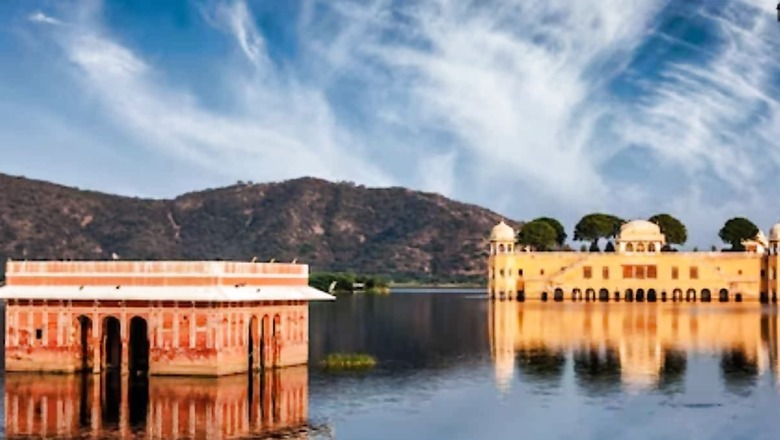
views
Rajasthan is known for its grand Havelis, forts, and uniquely designed shrines. The Rajput style of architecture can be vividly seen in cities like Jaisalmer, Jaipur, Jodhpur and Udaipur. Located in the middle of Man Sagar Lake in Jaipur, Jal Mahal is counted as one of the finest examples of Rajput and Mughal Architecture. It is known by many names like Underwater Palace, Floating Palace or Water Palace.
Built around the 18th century, the Jal Mahal was used by kings and queens for spending quality time due to the eye-catching beauty of the palace and the picturesque view. Apart from this, the palace was also used during royal festivals.
In the 16th century, due to severe drought before the construction of this palace, Man Singh, the ruler of Amer, decided to build a dam to collect the water wasted on the rivers of Amer and Amgarh. This led to the formation of Man Sagar Lake. Spread over 382 acres, this lake is surrounded on three sides by the Aravalli hills in the north, west and east. Attracted by the beauty, the kings often used to visit this lake by their boats.
Raja Sawai Jai Singh decided to build a palace in the middle of the lake so that he could live there. The palace was originally built in 1699. It has been renovated several times. Rajput-style boats were used in its construction.
The palace is a two-storey square building with arches, turrets, chhatris and staircases similar to medieval palaces. Its upper storey has turreted roofs at the four corners and the central arch rests on marble pillars. Red sandstone was used in the construction of the Jal Mahal.
The highlighting feature of this five-storey Jal Mahal is that only one of its floors is visible above the water, whereas, after the construction of Man Sagar Lake, the remaining four floors have been submerged in water. It gives the perception that the palace is floating on the lake.
More than one lakh trees have been planted in the nursery of Jal Mahal, which is looked after by about 100 gardeners. They are responsible for taking care of these plants and trees. This nursery is the highest tree nursery in Rajasthan. Every year beautiful plants like dates, China palm and bougainvillea are planted here.

















Comments
0 comment